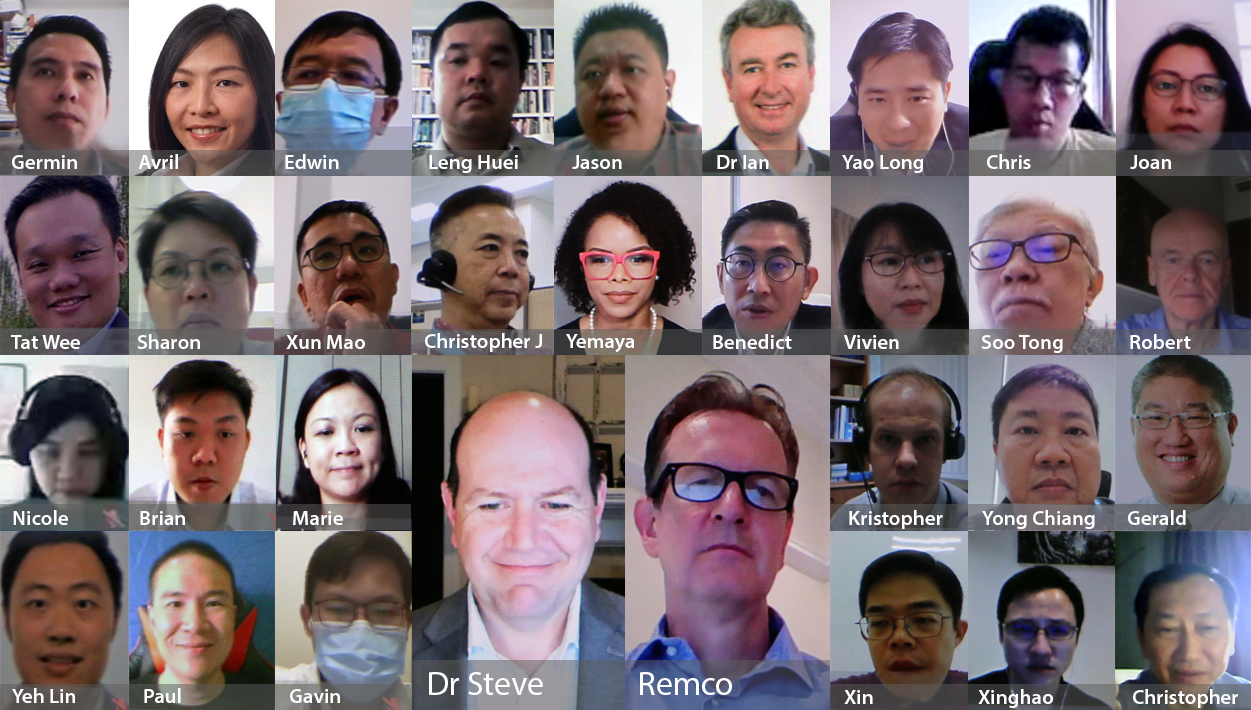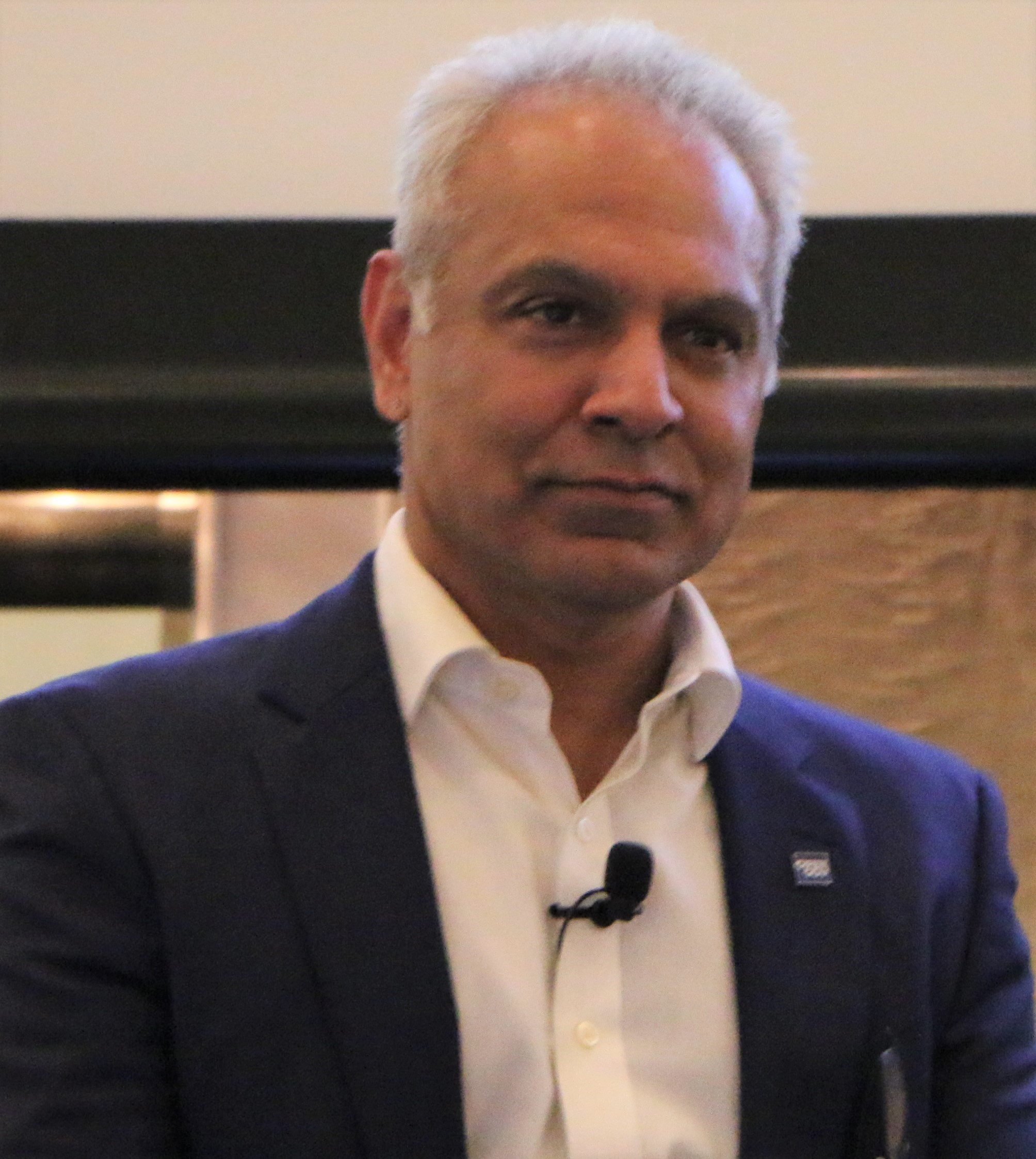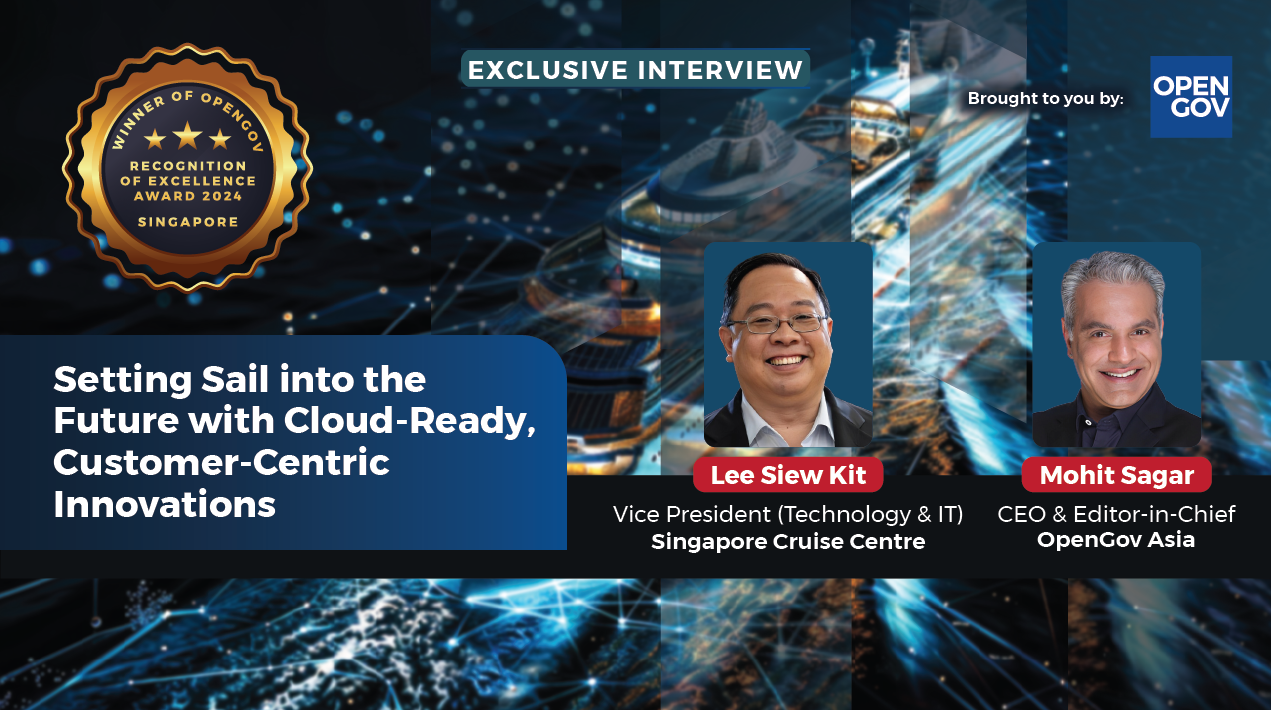
This is Part 2 of a two-part series covering the Public Sector Innovation Day – Singapore. Read Part 1 here.
The COVID-19 pandemic has brought about significant changes in the world. It has ushered in a new normal, bringing a different era of governance and business operations. Technology is at the fore of this front, helping adapt to these disruptive changes in an unprecedented manner. The scale of this transformation is incredible – experts say CVOID-19 has driven two years of digital transformation in two months.
The public sector is at the heart of the response to COVID-19. The response has required action on multiple fronts, using technology advancements, not just for health measures, but to aid efforts to mitigate the economic effects on households, firms, and industries.
The crisis has drawn attention to the tools and technologies that governments need to have to protect their citizens and enterprises as agencies struggle to minimise associated negative impact, deliver public services, and ensure the continued development of critical national infrastructure.
A digitally enabled government must go beyond merely digitising processes and offering services online. It must also find innovative ways to raise productivity in workplaces and bring convenience and efficient services to citizens.
As the world prepares for the new normal and all the economic, social, and political question marks that accompany it, many are looking to the tools of data science to continue to inform this trajectory. Advanced data science, and the technology it powers, is rapidly becoming an essential component of nearly every industry.
The Singapore government, too, is looking to ramp up the adoption of digital technologies and the nation to recover from the COVID-19 pandemic. Simultaneously national tech agencies developing new digital tools and services to support citizens and businesses. This requires a comprehensive approach including the ability to rapidly integrate new data, make accurate, multilevel forecasts and provide data-driven insights for policymakers.
Now, even as the journey to a post-COVID-19 recovery has begun, the question is still relevant: does the public sector has the necessary tools and technologies to respond effectively, recover quickly, rebound efficiently and reimagine the future which is critical to national interests?
OpenGov Asia held a Public Sector Innovation Day 1 for Singapore at Intercontinental Singapore. The session aimed to impart knowledge on how public sector agencies can accelerate digital transformation and innovation to emerge stronger post-COVID-19.
Attended by key policymakers from the public sector and technology industry experts, the session served as a great peer-to-peer learning platform to gain insights and practical solutions to understand the value of cutting-edge technologies available to make better, faster, and more cost-effective, data-driven decisions that make a difference in the lives of the citizens post-pandemic.
How COVID-19 Accelerated Public Sector’s Digital Transformation

To kickstart the session, Mohit Sagar, Group Managing Director and Editor-in-Chief at OpenGov Asia delivered opening remarks.
As early as 2019, there was consensus on the benefits of remote working, but it did not happen in any significant way. Then, at the end of 2019 came a crisis so debilitating that it brought the world to a halt almost overnight and it kept going relentlessly.
but not all were equipped to do so and many just emulated what the other countries were doing. None the less, public services globally have been significantly boosted.
Countries from all over the world were looking to adapt to the challenge. Citizens needed access to government services more intensely and urgently. New information and data were being generated incessantly, necessitating new plans and decisions.
In the early stages, people were excited at the opportunity to work from home. Interestingly though, the step was considered a “pivot” – with the connotation of reaction rather than strategic. People and organisations were said to be “pivoting” to manage and mitigate the issues the pandemic brought like making people work from anywhere, anytime.
Beyond a doubt, the public sector did its job in terms of providing relevant services and initiatives throughout the age of COVID-19. But the question remains, were those initiatives innovative and intentional and sustainable? Were they just a good-to-have or a must-have?
The good brings with it the bad, the unsafe and the difficult. As the initial euphoria of remote working wears thin, people, once happy about the shift, realise that the new normal disrupts their work-life balance and their well-being. Other measures are facing the same reaction. Lacking data, this so-called digital transformation is rapidly losing its sheen and is being considered a band-aid solution.
With COVID-19 seemingly waning and the economy starting to open, governments are looking for ways to boost their economy. In this sea of change and disruption, often reverting to the known is comforting. Knowing this penchant, Mohit asked the delegates, “Do we want to go back to the old norm because it was beneficial at that time? Or should we welcome the wider adoption of technologies that helped us adjust to the new norm?”
Mohit reminded the delegates that by staying true to the lessons learned from COVID-19 and by increasing the usage of technologies like AI, Cloud and Data Analytics, agencies can move further along on their digital transformation journey.
Governments must find the right balance in their digital transformation journey between technology, people, and processes. They must also find leadership and the will to empower the workforce with the right tools to achieve the ultimate end goal of a complete digital transformation in the new normal.
In closing, Mohit emphasised the need for agencies to find a suitable partner in this digital journey. They must find the right people who do what they do best for them to stay on the right path towards a full digital transformation.
Responsible and ethical use of AI in the public sector challenges, and best practices

After Mohit’s opening remarks, the forum heard from Dr Ian Oppermann, Chief Data Scientist and CEO, NSW Data Analytics Centre, NSW Government on how the public sector can use AI responsibly and ethically.
Highlighting the importance of data, Ian said it now affects all aspects of citizen-focused outcomes, based on life journeys such as starting a family, education, jobs, serious illness and injury and retirement plans. In New South Wales (NSW), data has been empowering these social and community areas and will be used to assess the performance of future smart initiatives developed by the NSW Government and its partners.
NSW recently released a Smart Places Strategy with a citizen-centric view, building on years of work and enhanced by digital twins, data sharing, security and privacy. The NSW government Smart Places is is designed to deliver outcomes to benefit the citizens, businesses, employees and partners.
The outcomes span six key areas and were developed using insights from engagement with communities across regional and metropolitan NSW. The Smart Places Strategy focuses on:
- Skills, jobs, and development: grow knowledge capital of people and businesses in NSW to benefit from the transition of the global economy
- Safety and security: provide safer places for people and increase a sense of security
- Environmental quality: (increase sustainability by reducing emissions, resource consumption and environmental impacts
- Equity, accessibility, and inclusion: will improve physical and digital access for the people of NSW to participate in economic and civic life
- Health and well-being: improve the quality of life and well-being for the people of NSW
- Collaboration and connection: bring people, businesses and governments, their data, and services together in a seamless way
More recently the NSW government launched an AI Strategy programme to improve service delivery and government decision-making. Undeniably, AI can play a key role in automating inefficient and manual processes to deliver better services to citizens and free up staff time for more critical or frontline work. AI can also assist in decision-making concerning resource allocation based on community need.
However, Ian confirmed, AI will not be used to make unilateral decisions that impact citizens or their human rights. While can assist in decision-making and service delivery, any AI-informed decision remains the responsibility of the agency using the technology. The government will carefully monitor the consequences of such decisions.
Further, the NSW Government approach is clear that no AI-informed decision will be made without those impacted being able to access a quick and efficient review. Citizens should be able to understand how their data is being used and for what purpose. Additional safeguards will need to be in place to ensure the right questions are being asked of the technology and that the correct legislative interpretation is informing the AI solution.
Recognising the speed at which technology develops and the need to build AI maturity, the immediate implementation of a mandatory AI policy and user guide was necessary. The policy sets clear requirements that agencies must address before sourcing and using AI. It will ensure a consistent approach to privacy, security, transparency and procurement of AI solutions.
Ian felt it was important that AI adopters know the key points and phases to consider when deploying AI systems namely:
- Pre-deployment phase: choose a data set that closely resembles the production system, select tools to test data, identify and eliminate data biases, execute non-functional testing, and perform data sanity checks.
- Post-deployment phase: review output from continuous feedback, establish failure threshold, use AI-monitoring platform(s) to identify code progressions, classify any required changes, identify new data parameters.
Most AI systems are unable to determine whether a task is appropriate or ethical. For AI systems to be successful, testers need to define the operational boundaries of the system and monitor them periodically to pre-empt problems. AI assurance systems utilise both human expertise and technology monitoring to help improve AI performance.
Reliant on data for training, AI adapts over time and show sensitivities to the quality of outputs. The learning allows the tool to generate better / more accurate results than earlier. AI algorithm may be extremely sensitive to the quality of data sets much more than others; e.g. adult/ not adult versus date of birth. An algorithm may initially produce a high-quality result but drift over time once an initial supervision training period is completed.
Ian feels that, ultimately, agencies must ensure a solid framework to help understand the entire data lifecycle from its storage up to the point of knowing its purpose. As better tools are built and more precise data microscopes and AI programmes are created, they must be used to deliver value to citizens.
Fireside chat: How can the public sector leverage data revolution to respond, recover and reimagine next-gen citizen-centric services?

The session proceeded to the fireside chat segment where Mohit and Remco den Heijer Vice President – ASEAN SAS discussed how the public sector can leverage data revolution to respond, recover and reimagine next-gen citizen-centric services.
Mohit started the discussion by asking Remco den Heijer how he sees data as the heart of the COVID-19 recovery. Remco explained that data analytics and AI are the perfect elements in terms of recovering from the pandemic because data is everywhere, both in the private and public sectors.
The world should embrace technologies that are scaling and continuously evolving. Disruptive technologies can extract actionable insights from this data, which is why both sectors must use this development and advantage to recover from the pandemic. Software, hardware, and related skills must be enhanced to leverage technology and data for recovery purposes. Technologies that are scaling and continuously evolving should be embraced.
Remco touched on the topic of AI being used by governments in their processes. AI adopters, he advises, must continuously update their AI models with new and updated data to strengthen their predictive capabilities that will provide possible solutions for present endeavours. He is convinced that that AI functions at its finest when it is incorporated with human intelligence. Having that human lens on top of the tech will always be an important aspect.
Remco urged delegates to continue doubling down on networks and partnerships and to continue learning from each other in this journey.
Power Talk and Interactive Discussion
After the informative presentations from distinguished speakers, Mohit joined Benedict Tan, Group Chief Digital Strategy Officer and Chief Data Officer, Singapore Health Services, Jason Loh, Head of Analytics and Artificial Intelligence, Asia Pacific, Global Tech Practice, SAS, Dr Steve Bennett, Director -Public Sector and Financial Services Practice, SAS, and Dr Yemaya Bordain, Director – IOTG Global, Public Sector Sales, Intel in the session’s Power Talk segment aided with polling questions.
 In this uniquely formatted session, the audience was asked to vote in real-time to a set of questions. Speakers reflect on the responses and share their perspectives, making it a highly interactive and engaging session.
In this uniquely formatted session, the audience was asked to vote in real-time to a set of questions. Speakers reflect on the responses and share their perspectives, making it a highly interactive and engaging session.
In the first poll, delegates were asked what percentage of their workforce would continue working remotely for the next six to twelve months. Over 57% of the delegates said between a quarter to a half (26%-50%) of their workforce will continue working from home.
Continuing along this line, the delegates were also asked if they think public sector employees would be allowed to work from home for more than 60% of the time. Votes were almost evenly divided, with 37% saying no, 33% felt they would be allowed and 29% were not sure.
Reflecting on this issue, Dr Steve Bennett felt that the emotional attachment between workers and a feeling of connectedness was what was missing in this new working structure. Technology must fill in the void of informal/personal connections only attained by working on site. So, while the current set up is good, he believes, there are ways to go beyond what is being applied today.
Benedict Tan added to this discussion by pointing out the limitations of remote working for the healthcare sector. The medical and care arena is not likely to further adopt the new working set up as hospitals and healthcare facilities are designed to be utilised on-site. Beyond the healthcare sector, he believes new infrastructure should improve on these new processes.
Dr Yemaya said that the new normal and the adjustments it brought made people appreciate how much innovation helped in an impromptu manner. However, from a citizen’s perspective, she explained that not having visible on-site workers to deliver public services can be problematic. Citizens sometimes think that if there is no one to facilitate these services personally, they are sub-par, even though results are consistent for physical and digital setups.
On being asked about how well equipped is the public sector in supporting a 75% remote workforce, almost half of the delegates said there is a lack of collaboration tools for seamless remote work and the appropriate solutions are still be explored. The remaining group (42%) said they have the tools needed to allow remote work seamlessly.
Dr Yemaya Bordain firmly believes that if governments can find the right collaboration tools in this new working set up, it would boost the morale of their workers who will adopt this change in engagement.
In the new working environment, Jason Loh felt that people are more connected than ever before because remote working bridges gaps and crosses borders effectively.
Delegates were about the ways on how they measure the level of satisfaction of their hybrid workforce. Just over half (52%) indicated they have the tools but are not sure of the effectiveness. About a third (32%) said that they would like to measure the level of satisfaction and productivity of employees and are looking for appropriate solutions.
In light of the previous answers, delegates were asked if they felt they were in the right position to roll out new citizen services or initiative while having a remote workforce. An overwhelming majority (81%) felt they were well placed to do so but they have limited functionalities. Just under a fifth (18%) said they would like to roll out these new citizen services, but they need help to do it.
Dr Steve Bennett agreed that there was a wide range of positive outcomes when working remotely but the issue of burnout does come up. Governments and organisations must find the right balance in this new working environment.
Asked about data playing an integral role in recovery plans post-pandemic, 91% of the delegates agreed that data would be critical in the world’s recovery phase.
However, Dr Yemaya Bordain said that the usage of data needs to be in context and must apply to all backgrounds. It needs to have details attached to it to reap its benefits.
Exploring the obstacles, the agencies should overcome to make data science and AI useful and integral in crises, 45% agreed that the lack of skills poses the biggest challenge. A quarter (25%) considered the change in public sector policies as an obstacle while the remaining 25% felt that cultural shifts hinder the adoption of these technologies.
To round off the discussion, delegates were asked about the areas they plan to prioritise in terms of IT spending for the second half of 2021. Over a third (37%) said they would invest in advanced analytics and AI, while 12% indicated spending for communications technologies and automation workflows software was a priority.
Conclusion
The OpenGov Public Innovation Day 2 – Singapore – Virtual Edition ended with the closing remarks from Remco den Heijer.
At the end of the day, Remco said, the public sector exists to serve citizens. If anything can be done to improve, or even save lives, that is rewarding enough. He added that the digital age is an exciting time to be in, and governments must utilise this era to improve more lives. The promise of data analytics, AI and other disruptive technologies are real. To reap their full benefits, everyone must be open to partnerships, collaborations, sharing data, technology choices, and exploring new ideas – connectedness must be promoted if the world is to learn and improve as a society.
For more on OpenGov Asia’s Public Sector Innovation Day – Singapore: “Accelerating Digital Transformation, Resiliency, and Innovation for Public Sector in Post-Pandemic Recovery”, read Part 1 here.
















